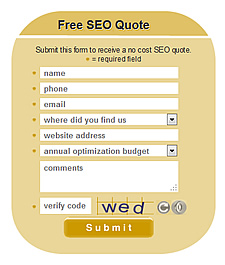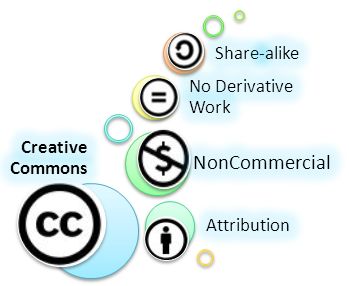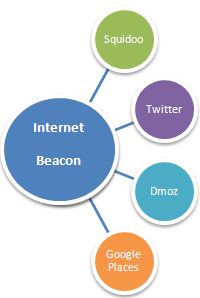Author Archive
Friday, November 18th, 2011
If you use Twitter, by now you have probably have a large number of people that you follow as well as a solid following for yourself. One of the quickest ways to build a following besides offering popular content is to follow other users in the hopes that they follow you back or influence other users to check out your content. Are the people that you follow offering useful and relevant information or are they just people you followed in order to increase your presence on the social network? Although this can be a great way to get started, once you have gained a good number of followers these users may no longer be relevant.

Twitter Logo from http://www.twitter.com, Nov 2011
Twitter tools and tips
Twitter Tools and Tips
Managing a professional or company Twitter account is a lot different than managing a personal one, mainly because you are not as lax with your company page as you are with your personal account. A business Twitter page should be all about offering industry, consumer, and company information while an individual page is more often used for social communications with friends and family. It becomes much easier to manage the two if you avoid mixing your personal and professional Tweets.
When to follow someone on Twitter:
- If they keep you informed.
- If they entertain you.
- If they make things easier on you.
- If they are already an active member of your network.
- If they are someone you’d like to get to know.
When Not to Follow Someone on Twitter:
- If the user is not industry related or only use their account for personal tweets.
- If the user still has the default Easter egg avatar or if they use a provocative female as their avatar when it is clearly a man or corporation tweeting.
- If the user doesn’t list anything in their bio. (No website, no location)
- If the
… Read the rest
Tags: follow, follow back, followers, Social Media, social network, Twitter, twitter follow, twitter tools
Posted in Social Media Marketing, Social Networking, Twitter | 6 Comments »
Friday, November 11th, 2011
In any type of business there is always competition, some industries just face more of it than others. If you are like most people then you probably have a hard time dealing with the stress brought on by your competitors. If you feel this way about competition it is completely normal but if you know how to use your competitors to your advantage you can almost always turn this into a positive feeling. Competition isn’t all bad because it helps us to better ourselves or our business because it plays off our relentless desire to be the best that we can be.
 With Search Engine Optimization the goal is to have your website ranked the highest and receive the most traffic or conversions. Being the most prominent and relevant website is crucial to the success of most businesses. The competing websites that you encounter when performing your SEO may seem like a bad thing, however they can almost always assist you in making better internet marketing decisions. It may seem sneaky to spy on your competitors but it has become a common practice and competitive analysis is a crucial component to website marketing. Knowing who your competitors are and how they are conducting their SEO can provide you with some very valuable marketing data. Below is a short list of how you can benefit from exploring the trends and movements of the top competitors for yours or your client’s website. With Search Engine Optimization the goal is to have your website ranked the highest and receive the most traffic or conversions. Being the most prominent and relevant website is crucial to the success of most businesses. The competing websites that you encounter when performing your SEO may seem like a bad thing, however they can almost always assist you in making better internet marketing decisions. It may seem sneaky to spy on your competitors but it has become a common practice and competitive analysis is a crucial component to website marketing. Knowing who your competitors are and how they are conducting their SEO can provide you with some very valuable marketing data. Below is a short list of how you can benefit from exploring the trends and movements of the top competitors for yours or your client’s website.
Social Media:
Social Media is probably the easiest place to start. Check out what social networking sites that your competitors are using and see which ones would be beneficial to your website. In addition see how they are using these sites to communicate with their audience and what type of content they offer on their social pages. Identifying how your competition is using these platforms is a great way to get an idea of what people like, what they don’t like, what is successful, what isn’t successful, and what you can be doing that they aren’t.
Meta… Read the rest
Tags: backlinks, competition, competitors, competitve analysis, Internet Marketing, keywords, seo
Posted in Internet Marketing, Search Engine Optimization SEO | 7 Comments »
Friday, November 4th, 2011
A lead capture form is often the highlight of a landing page. These forms are the most important elements to driving customer contact and capturing new leads. The lead capture form is an absolute necessity and can often make or break your landing page. Without a lead capture form the landing page remains just another hurdle between you and your prospective clients. If you don’t already have a lead form posted on your landing page then we advise that you make creating one a top priority. 
The following are some of the critical elements that every lead capture form should have along with some extra tips for improving your landing page:
Basic Landing Page Tips:
The real measure of a successful website isn’t the number of visitors but rather the number of conversions. A conversion is when a visitor comes to your site and performs a certain task. These desired actions could be purchasing a product, getting a quote, signing up for a newsletter, or any other specified goal. Upon landing on a page, customers consider if they are in the right place, the trust level they have for the site, the amount of time the process will take, and the potential benefit from the conversion. The landing page should address these concerns and then proceed to display your introduction copy, any media content, product information, customer testimonials, and lead capture forms.
- Create a headline or tag line that really captures the interest of your visitors. A strong headline should urge potential customers to stay longer, learn more, and influence them to provide their contact information.
- Have a strong call to action that stands out and instructs your visitors to perform your requested action. A good call to action is found above the fold and will help urge your visitors to take immediate action.
- Makes sure that your landing page is visually appealing and easy to understand. Use visual cues to
… Read the rest
Tags: call to action, conversions, form fields, landing page, lead capture form, lead form, website forms
Posted in Internet Marketing, Web Development | No Comments »
Friday, October 28th, 2011
Adding a visual interest to your blog is a great way to attract an audience and it also serves to break up some of the more text heavy articles. However using an image on a blog can be a little tricky due to copyrights. Now of course this doesn’t apply to people who create their own custom images or showcase their personal photos. For the rest of us it is important to know how to protect ourselves from any possible infringement. The following is some background on copyright infringement and the best practices for avoiding it when applying a picture to your blog.

Basic Creative Commons licenses
Blog Pictures – Why Images are good for your blog:
As the saying goes a picture can speak a thousand words, having an illustration that is relevant to your content add a level of detail to your content and often influences readers to read your article. Utilizing an image on your blog can also help increase SEO value with the use of Alt attributes. ALT attributes help the visually impaired readers who use screen readers and may provide bonus points with Google.
The best types of images to add to your blog:
- Eye catching photos – Something that relates to your article or can be used as an interpretation of the article’s title.
- Photos with people in them – Displaying a relevant image with people also helps the audience connect with the theme of the article.
- Screen Shots – Screen shots are probably the best way to depict the topic of the article because more than likely it will be a screenshot of the subject that you are talking about. For example if you are writing a tutorial you can provide step by step screen shots. Additionally, if you are talking about a specific software application you can take a screen shot of their company logo or user interface. A good screenshot tool to have is GreenShot.
… Read the rest
Tags: blog, commercial, copyright, copyright infringement, creative commons, image, license, photos
Posted in Blog Hints | 2 Comments »
Thursday, October 20th, 2011
As we have mentioned numerous times before one of the most important aspects of Search Engine Optimization is accumulating high quality backlinks. Backlinks are incoming links to your web pages and serve as an essential building block of a successful SEO strategy. Also known as inbound links, backlinks are important because they help indicate the popularity of your website and help to direct or drive in a high amount of new traffic. Websites are determined more relevant depending on the types of website as well as the quantity of websites that provide a backlink. Search engines like Google will often contribute more credit and place a higher rank on a website that contains a higher number of good quality links. 
Search engines determine the relevance of a website associated with a keyword according to its collection of backlinks and the anchor text used within the backlink. The anchor text of a back link is very important when gathering these links because it denotes the subject of the page and helps target your specific audience. One of the ways to acquire a backlink is guest blogging efforts. As we briefly mentioned in our past blog post, guest blogging is when another website hosts one or your articles or when you showcase an article from another blogger.
Why Guest Blogging:
Guest blogging is a great device to drive in traffic to your website and allows you to network with other bloggers from your industry. Besides driving in new traffic and networking with other bloggers, guest blogging also helps with branding and getting your name or company in the spotlight. Guest blogging is also helpful in building your social media profile and gaining more industry experience.
When to Guest Blog:
How do you know when you are ready for guest blogging? You should wait until you have established a well written blog and have confidence in your blogging abilities. When you guest blog you should do it… Read the rest
Tags: anchor text, backlinks, blog, blog post, guest, guest blog, guest blog post, guest blogger, guest blogging
Posted in Backlinks, Blog Hints, Internet Marketing, Search Engine Optimization SEO | 3 Comments »
Thursday, October 13th, 2011
Updating a website refers to the addition or modification of content as well as the actual design and layout of the website. Stale websites can quickly discourage web visitors and are one of the major reasons behind high bounce rates. A bounce occurs when a visitor quickly views the page that they have landed on and then decides to leave the site rather than exploring its other web pages. 
How often should you be updating your website:
So, how often should you be updating your website? There aren’t any set expectations for how often a website should be updated. However it is suggested that you perform updates as frequently as possible in order to prevent your website from looking dated and losing your valuable web traffic. It is recommended that you try to update your website at least 1 to 2 times a month. These weekly or monthly updates should be designed for only adding or refreshing content unless the entire website’s design is fatigued. As long as you develop a site that is both visually appealing and easily accessible then your primary updates should focus solely on your content.
When asked, most webmasters and search engine marketers agree that the more you update your content the more impact it will have on your Search Engine Optimization. Updating is especially helpful when it comes to blog content. Continuously adding new blog posts leads to more of your pages being indexed and draws in more visitors and potential customers.
Reasons for Updating Your Website:
- Updating provides your visitors with a visually appealing user experience.
- Updating your website establishes fresh and relevant content.
- Updating helps your website get indexed more often.
- Updating attracts new traffic.
- Updating increases rank and influences other websites to link to your website.
Tips for Updating Your Website’s Design:
… Read the rest
Tags: content, Design, seo, update, website, website content, website design
Posted in Web Development, Web Hosting, Web Tips | No Comments »
Thursday, October 6th, 2011
 - Apple’s iPhone4s from www.apple.com Oct 2011
Apple’s much anticipated October 4, 2011 press conference was rumored to be the public’s introduction to the iPhone 5. Leading up to the press conference Apple advertised with the phrase “Let’s talk iPhone”, which added to the already growing iPhone 5 rumors. During the press release Apple did talk about iPhones but not the one most consumers expected. The press conference may have left iPhone 5 enthusiasts disappointed but still delivered an amazing iPhone 4s.
The 4s offers many new features that should keep customers satisfied until the iPhone 5’s eventual release date. Although the iPhone 4s offers new and exciting features some people are still wondering if it is worth upgrading. The following guide includes some of the new features of the iPhone 4s to help you with this decision. The iPhone 4s will be available from $199-$399 next week on October 12, 2011.
Dual-Core A5 Chip:
The Dual-Core A5 Chip delivers the fastest and most powerful iPhone to date. The A5 chip allows for 2x more power and 7x faster graphics. The new chip makes the iPhone 4s faster and more responsive when launching applications, web browsing, and gaming. The Dual-Core A5 also provides users with an even longer battery life than any previous versions.
Siri Intelligent Assistant:
Siri, probably the most exciting of the new features is an intelligent assistant that allows users to control their device using their voice. Unlike most voice activation software, Apple claims that Siri not only understands the words that you say but also understands what you mean. Siri does what you tell it to do or locates the information that you request all by simply clicking on the microphone icon and speaking. Users can do things like ask about the… Read the rest
Tags: Apple, iOS5, iphone, iphone 4s, iphone 5, mobile features, Phone, Siri, Smartphone
Posted in Technology | 2 Comments »
Thursday, September 29th, 2011
An RSS feed or a “really simple syndication” is a media format that pushes frequently changed web content to subscribers. RSS feeds are mostly used to provide updated content such as blog post, news headlines, audio, or video. RSS channels are read using an RSS reader, software that can be web, desktop, or mobile based. RSS feeds allow web viewers to access content that has its presentation and formatting stripped away. In essence, an RSS feed removes useless clutter and leaves only relevant and easy to understand content. 
RSS feeds allow users to stay informed by receiving the latest news and website updates. In order to access RSS content, a user must first subscribe to a websites RSS feed. Most websites will have an RSS feed subscription button displayed prominently on their home page or blog. To subscribe, simply click on the RSS icon and select the RSS reader that you wish to use (If using Firefox you can also open the bookmarks menu and click “Subscribe to this page”). After subscribing to a feed, the reader will routinely check for new content. The RSS reader provides an interface where users can view the latest content from their favorite websites, all in one location.
The Benefits of an RSS Feed:
RSS feeds can be beneficial for both web publishers as well as web visitors. The following are some of the benefits for each.
Publishers:
- Improves Search Engine Optimization
- Enables Faster Web Crawling and Indexing
- Publicizes your new content automatically
- Helps Reach New Audiences
- Free Marketing and Easier to market than sending out email campaigns
Visitors:
- Provides the latest content and updates all in one place
- Saves time because the content is delivered to you
- Easy to subscribe and unsubscribe
How to use it to help your Internet Marketing:
One of the benefits of an RSS feed is that it helps with SEO. The following are a few examples for how an RSS feed can… Read the rest
Tags: content, Feed, feeds, Really simple syndication, rss, RSS Feed, RSS Feeds, subscribe
Posted in Blog Hints, Internet Marketing, Web Tips | No Comments »
Friday, September 23rd, 2011
 Recently we have been discussing backlinks and the benefits that they provide for your website. Backlinks are an essential part of the SEO process because they help your site’s search engine visibility and web rank. A backlink, also known as an inbound link is a link on another website that is directed to one of your web pages. Recently we have been discussing backlinks and the benefits that they provide for your website. Backlinks are an essential part of the SEO process because they help your site’s search engine visibility and web rank. A backlink, also known as an inbound link is a link on another website that is directed to one of your web pages.
When search engines like Google determine a website’s relevance for an associated keyword, they consider the quantity and quality of inbound links to that site. Inbound links with content related to your site they are thought to be more relevant and a more valuable SEO factor. In short, websites with the most relevant content to your website will produce the best quality inbound links.
High quality links are obtained through a number of different methods, one of which is leaving comments on other blogs. In addition to looking good in the eyes of the search engines, leaving your website’s URL on industry related blogs is a good way to direct new users to your content. For several reasons however leaving blog comments will not always produce the preferred results. The following are explanations why blog comments don’t always help your search engine optimization efforts as well as some of the things you should look for when pursuing blog comment backlinks.
Why Blog Comments Sometimes Don’t Help:
The impact that blog comments have on SEO depend on both the blog’s restrictions and the type of comment that you post. Some of the reasons why the comments that you leave on blogs might not contribute to your SEO are
- If Your Comment Appears As Spam:
Most blogs require that you use a human name when leaving a comment on their posts. The name you use to post is extremely important, having a too common name or using a company name will often be ignored. Sometimes blogs will even state that you must use a real name in order for your… Read the rest
Tags: blog, blog comments, inbound link, link juice, no follow
Posted in Backlinks, Blog Hints, Search Engine Optimization SEO | No Comments »
Friday, September 16th, 2011
Constructing a website for a business is only the first part of attracting your online customers. There are many factors that determine your position on the search engine results page, one of them being the quality and quantity of your inbound links. In order to increase traffic and gain a good web rank your website should have a significant amount of backlinks. These backlinks should connect with valuable, authoritative, and industry related websites. Gathering backlinks should be a top SEO priority because without them it can be extremely hard to move up in the search engine results or generate more website visibility.
There are a number of ways to build backlinks to your webpages, one of which we mentioned in our previous blog entry, “Reciprocal Linking”. Reciprocal or two way linking is when two websites agree to exchange links with each other. However linking doesn’t always have to be mutual, this type of linking is called one way linking. The following list provides some popular sources and methods of obtaining one way links.
Create Superior Content and Resources:
In addition to creating a visually appealing and easy to use website you will also need to have high quality content or linkbait to draw the attention of visitors. This content is used to influence visitors to link back to your website by sharing your content. When other websites share your content on their website they will typically link back to the original source.
- Create 101 articles that describe the basics of your industry related subject.
- Create Top 10 or 100 lists.
- Lists the top professionals from your industry.
- Create an infographic that displays industry information in an intriguing and exciting way.
- Create free helpful online tools or downloadable software programs.
Start a Blog:
A blog is a handy instrument when it comes to gaining momentum and popularity over the Internet. A Blog has many benefits for example it is an excellent way to reach existing clients and find new… Read the rest
Tags: backlinks, blog, content, inbound links, Links, search engines, Social Media
Posted in Backlinks, Internet Marketing, Search Engine Optimization SEO | 2 Comments »
|
Why Blog Comment Backlinks Don’t Always Help Your SEO
Friday, September 23rd, 2011When search engines like Google determine a website’s relevance for an associated keyword, they consider the quantity and quality of inbound links to that site. Inbound links with content related to your site they are thought to be more relevant and a more valuable SEO factor. In short, websites with the most relevant content to your website will produce the best quality inbound links.
High quality links are obtained through a number of different methods, one of which is leaving comments on other blogs. In addition to looking good in the eyes of the search engines, leaving your website’s URL on industry related blogs is a good way to direct new users to your content. For several reasons however leaving blog comments will not always produce the preferred results. The following are explanations why blog comments don’t always help your search engine optimization efforts as well as some of the things you should look for when pursuing blog comment backlinks.
Why Blog Comments Sometimes Don’t Help:
The impact that blog comments have on SEO depend on both the blog’s restrictions and the type of comment that you post. Some of the reasons why the comments that you leave on blogs might not contribute to your SEO are
Most blogs require that you use a human name when leaving a comment on their posts. The name you use to post is extremely important, having a too common name or using a company name will often be ignored. Sometimes blogs will even state that you must use a real name in order for your… Read the rest
Tags: blog, blog comments, inbound link, link juice, no follow
Posted in Backlinks, Blog Hints, Search Engine Optimization SEO | No Comments »